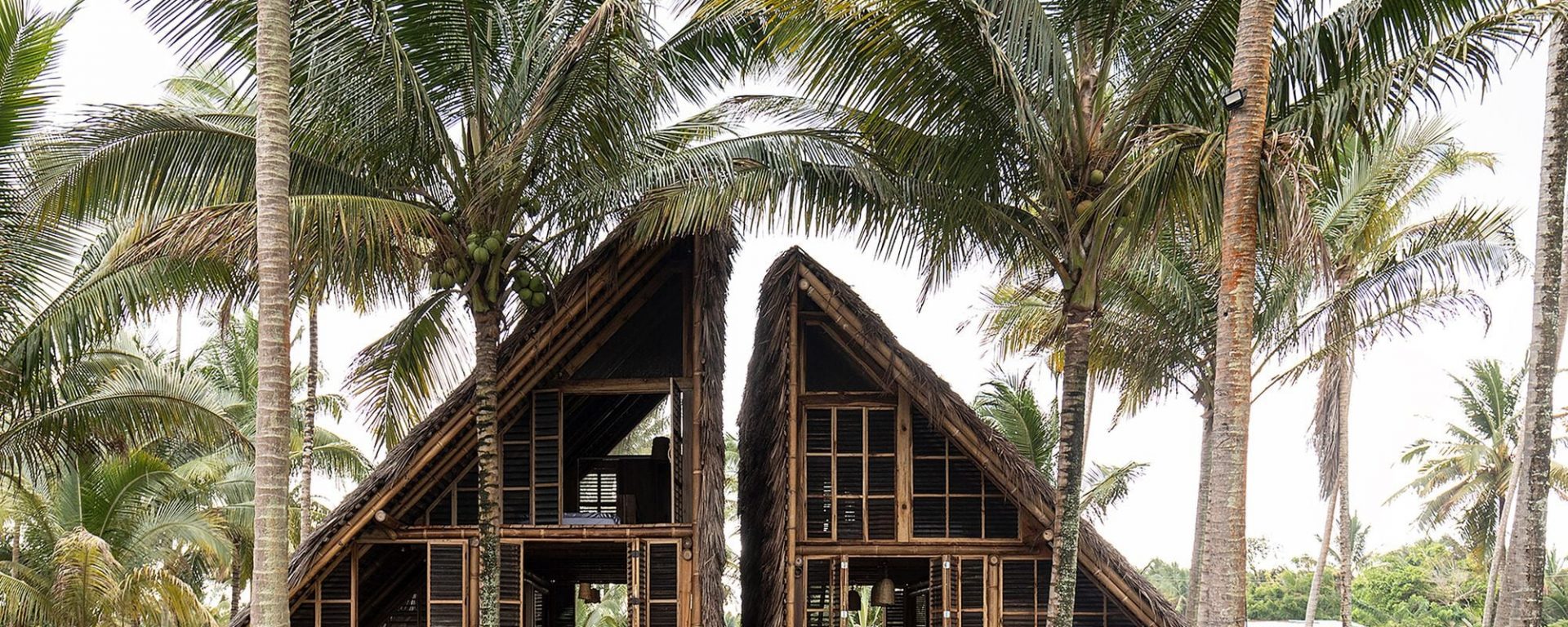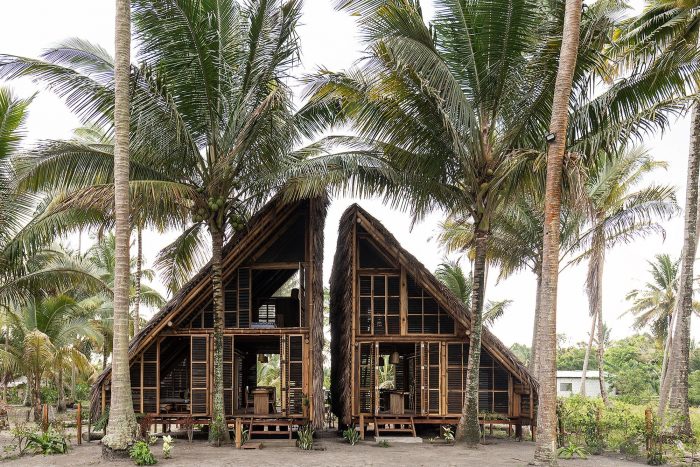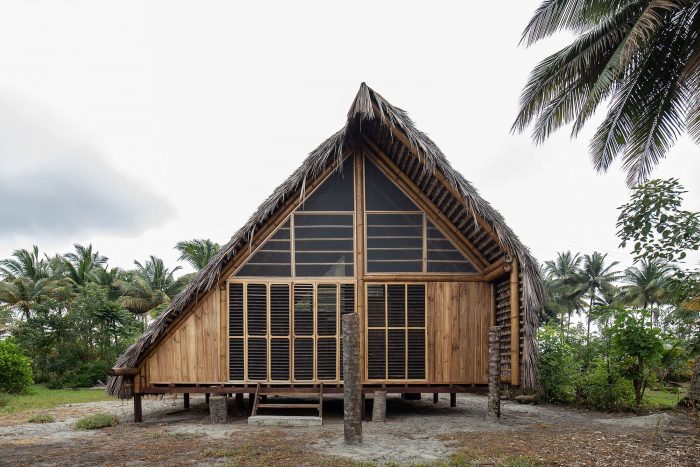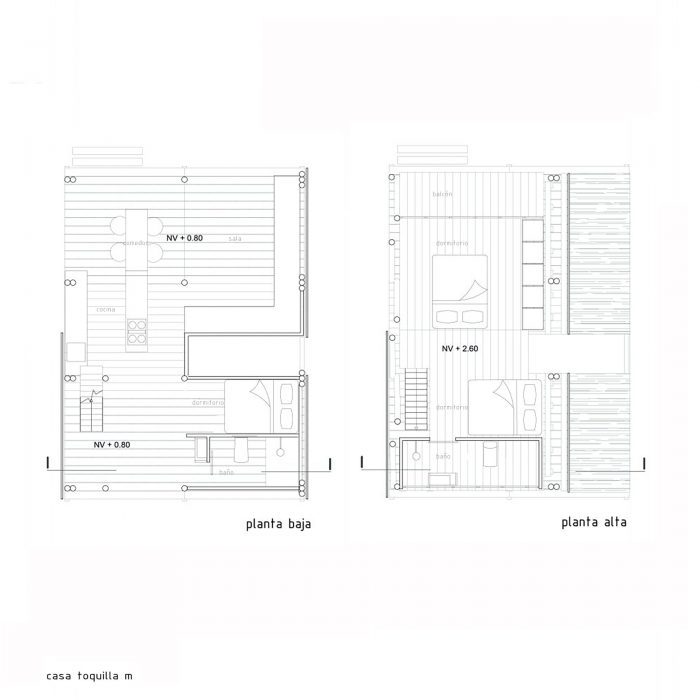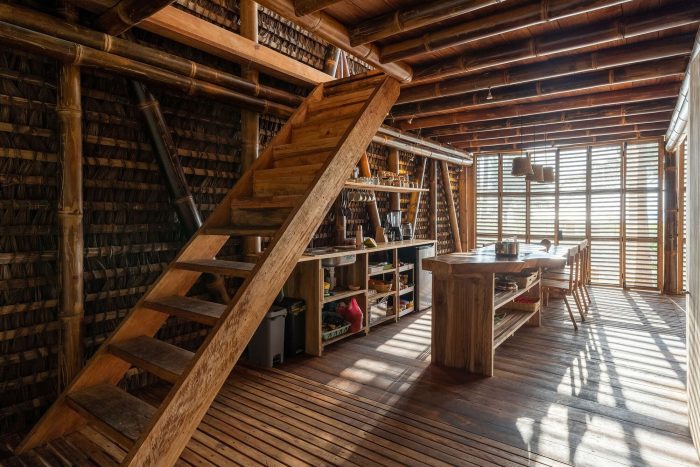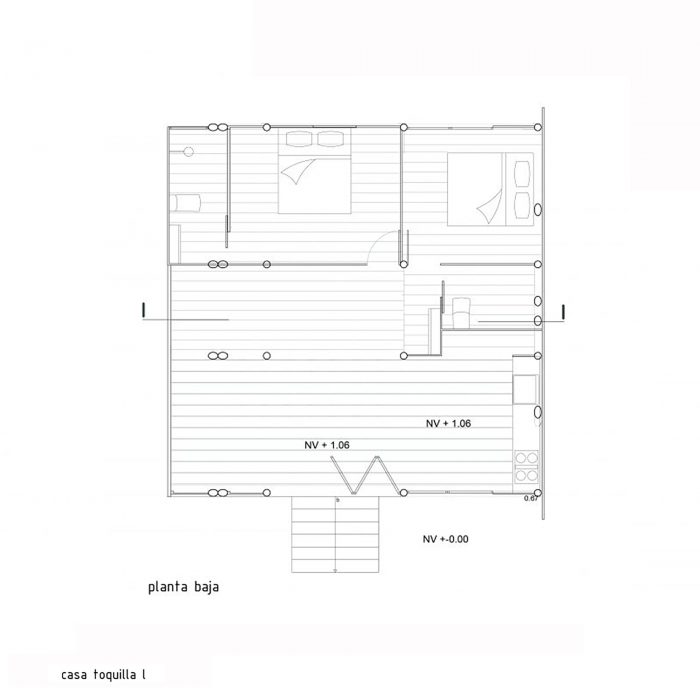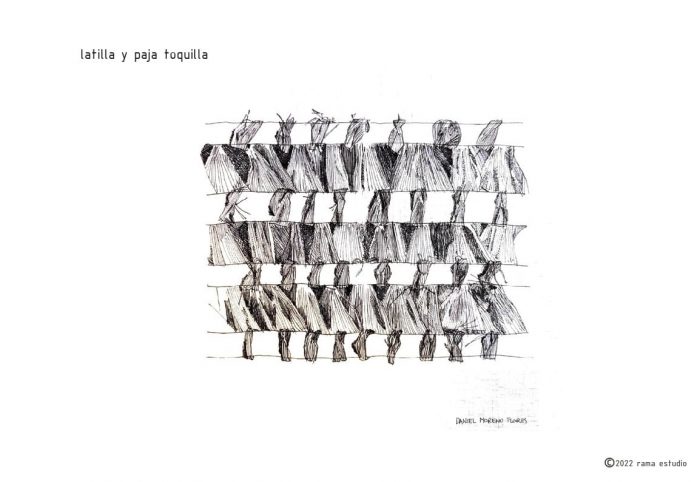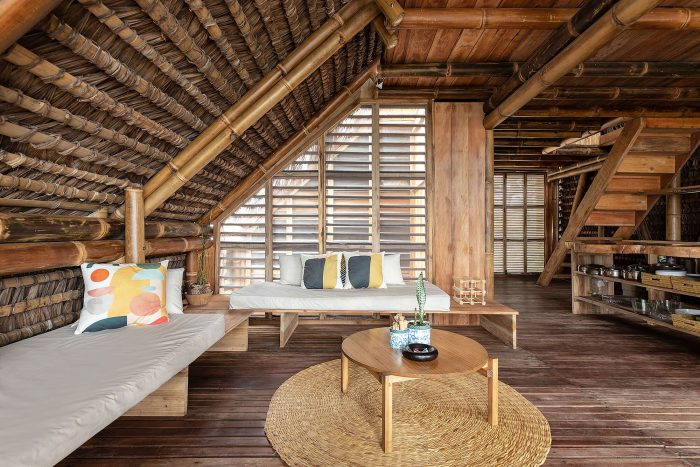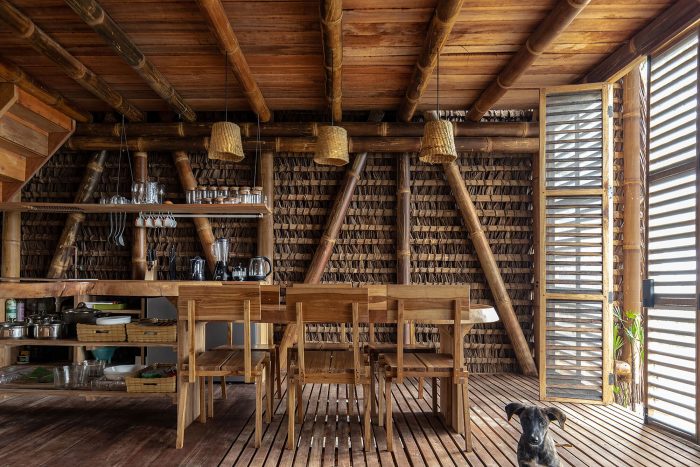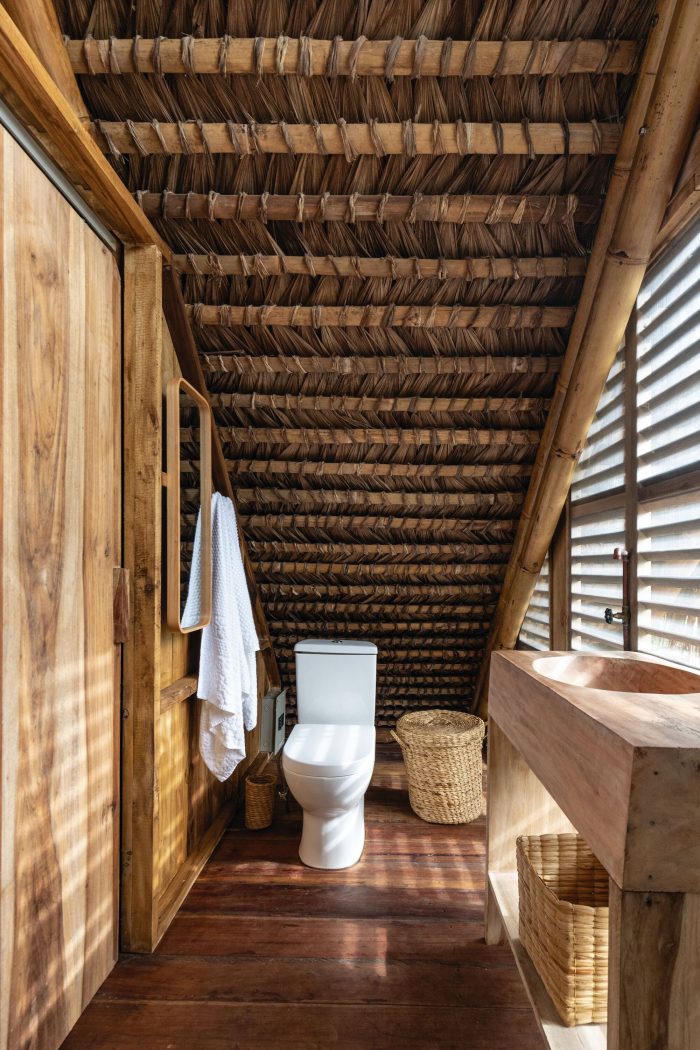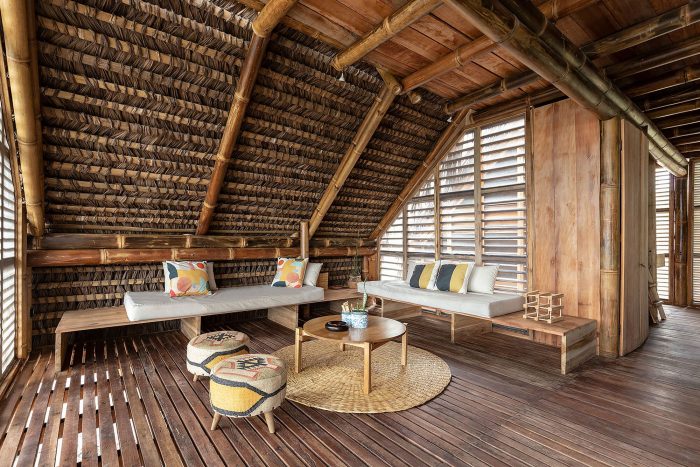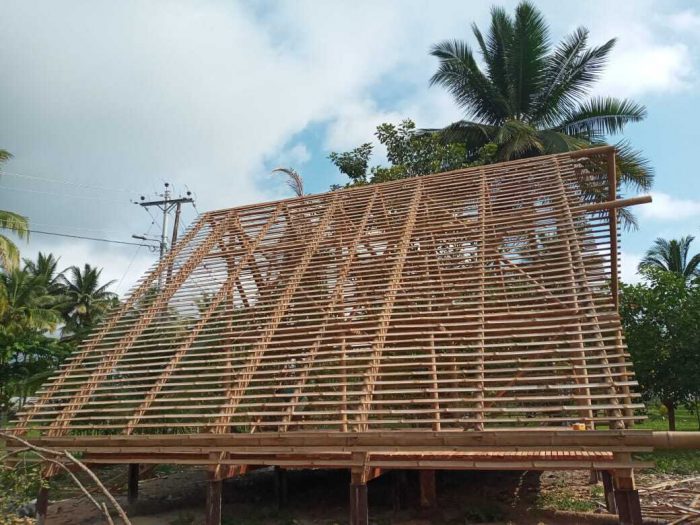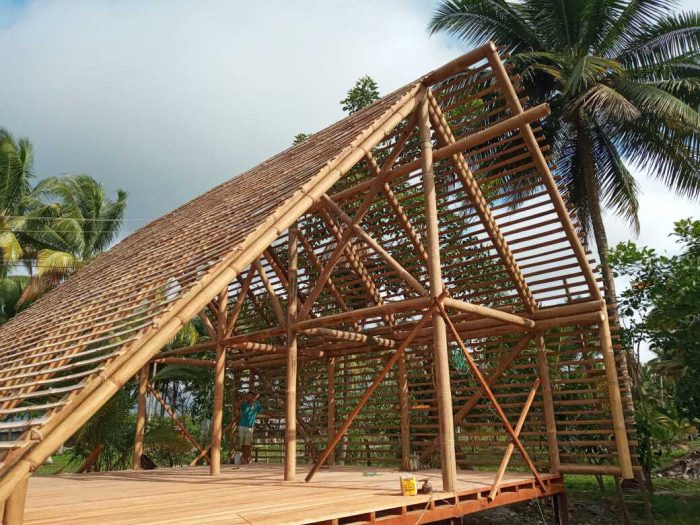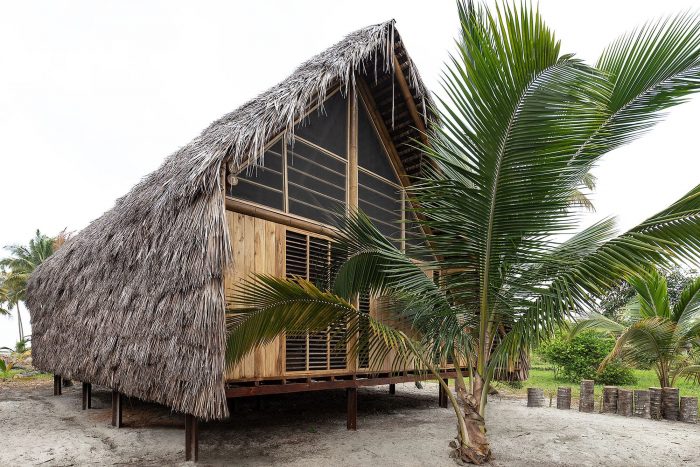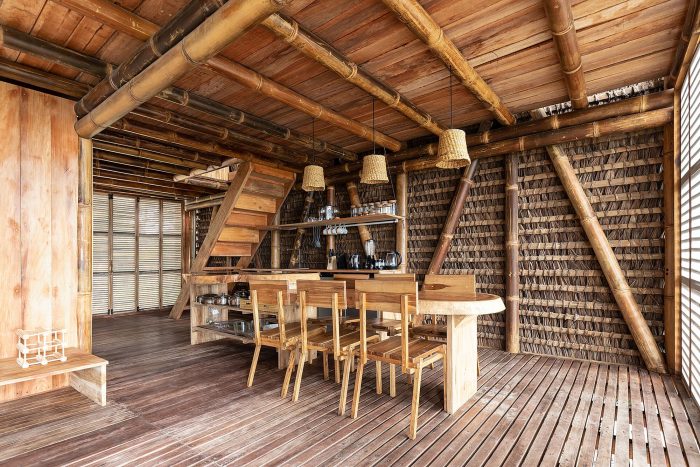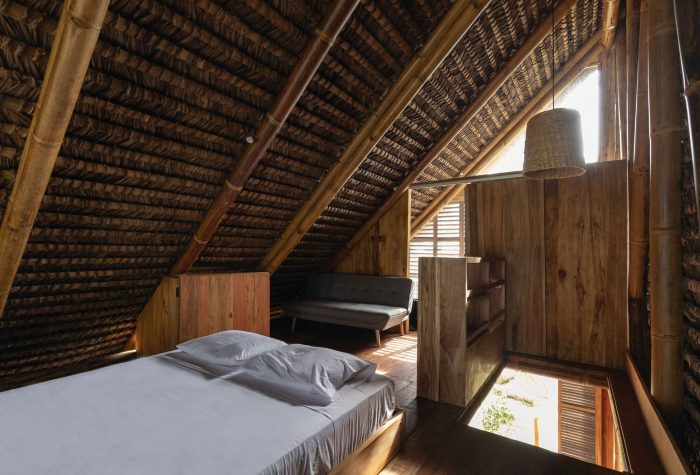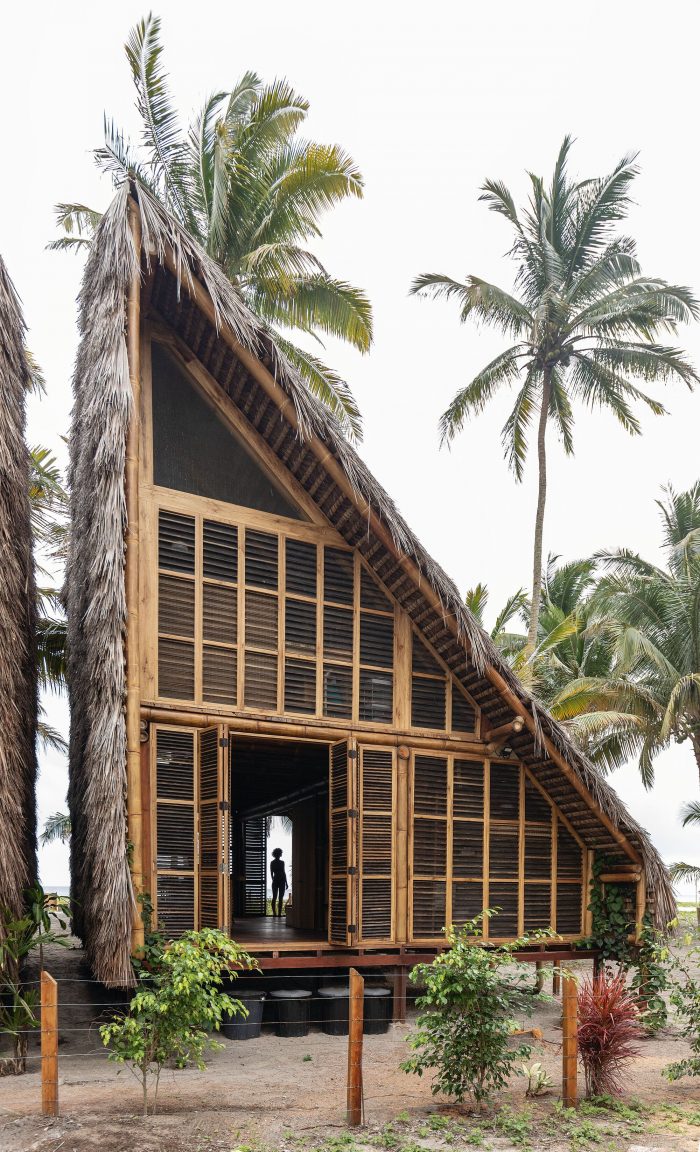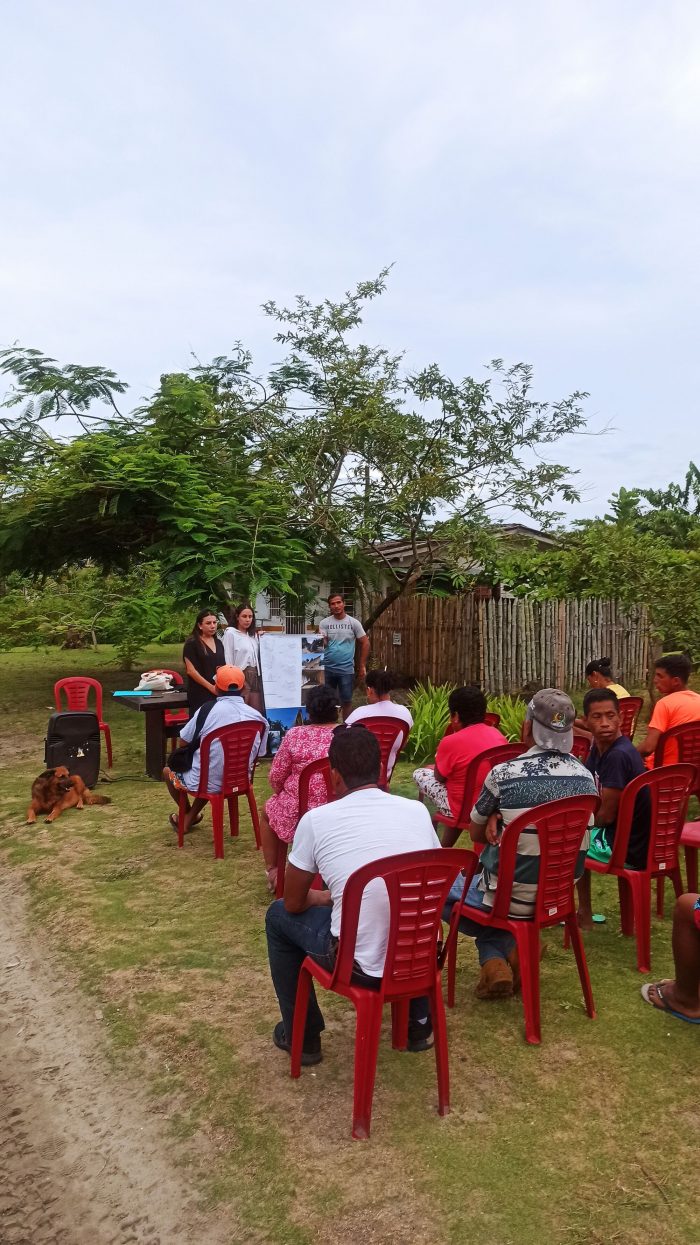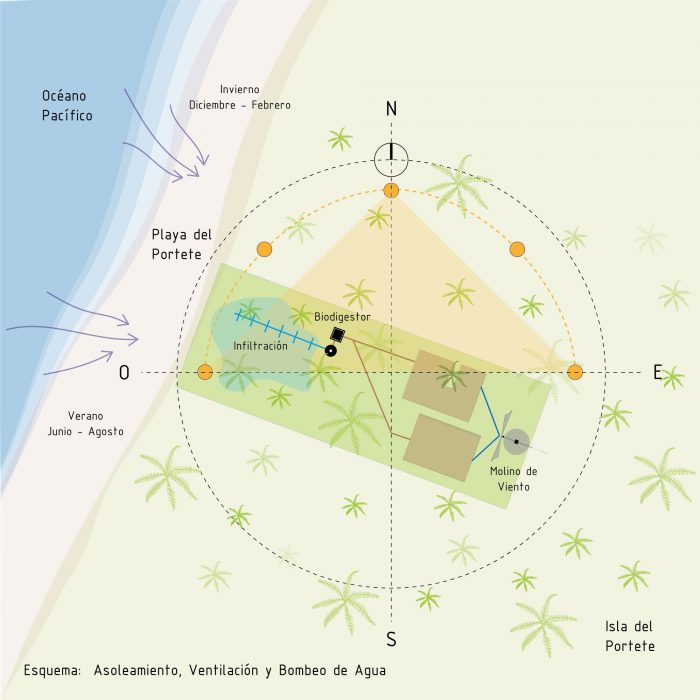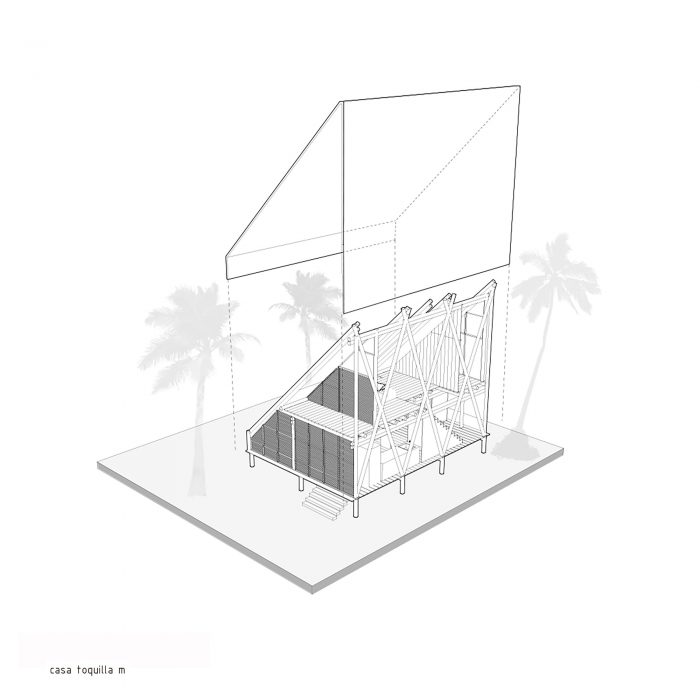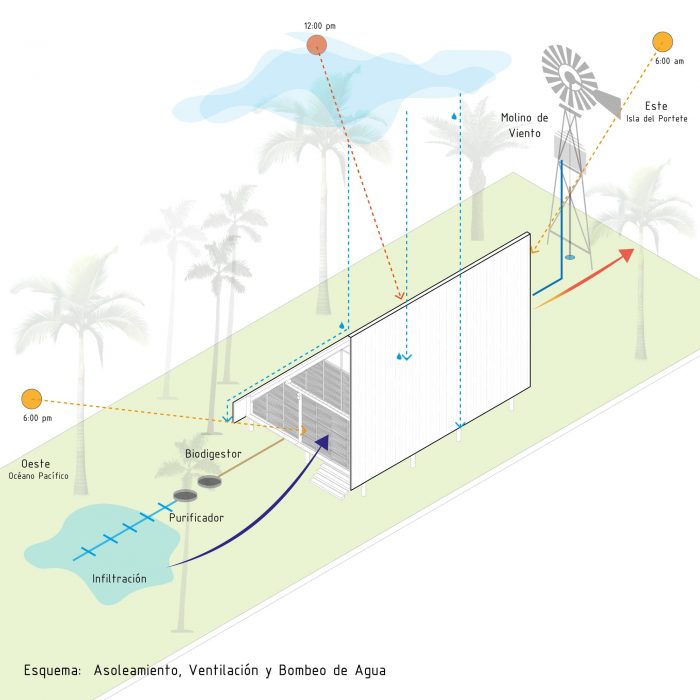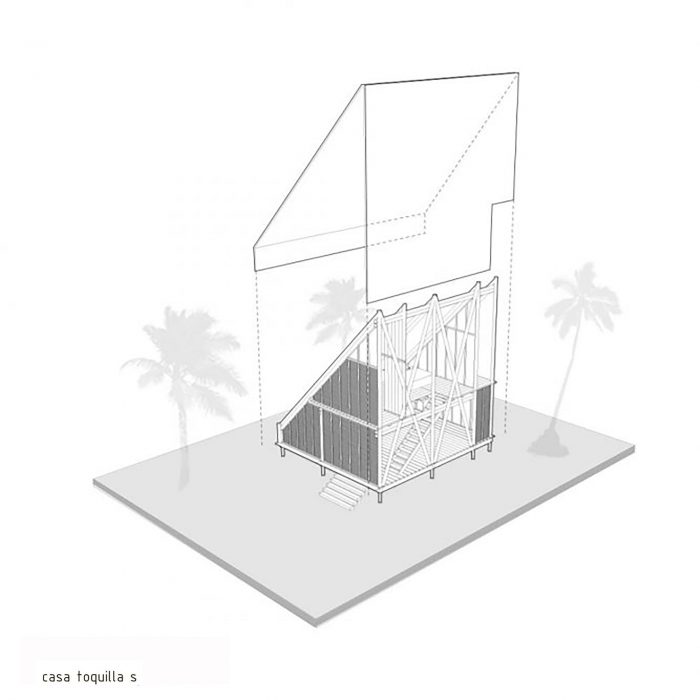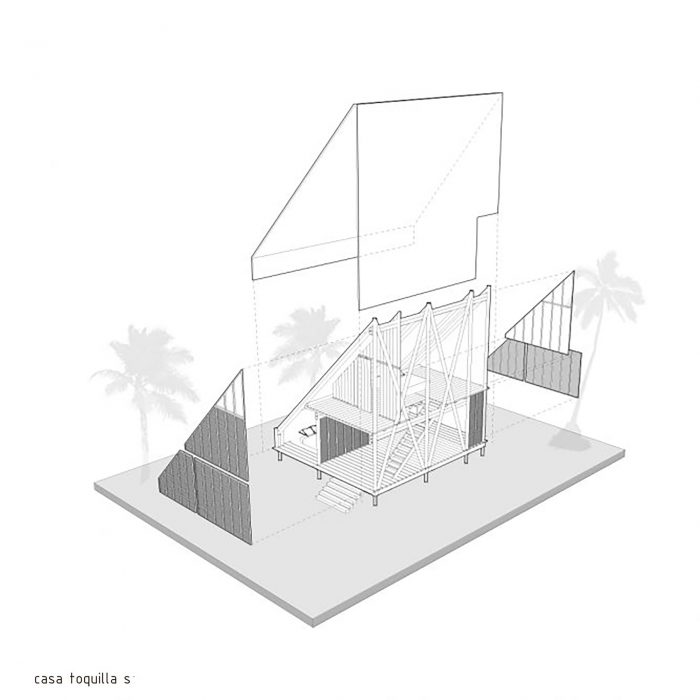该项目发生在Portete岛,位于厄瓜多尔埃斯梅拉达省,是受2016年地震影响的地区之一。作为这一事件的结果,居住在岛上的80个家庭被迁移到大陆,在一个不符合他们习俗的基础设施中,没有任何适合该地区的热条件。该地区特有的材料,如竹子、木材、toquilla稻草和kade,被锌板、砖块和混凝土所取代。该地区的传统建筑,其材料容易获得,更便宜,更可持续,却被指责为低质量的材料。这样一来,该地区的社区就无法使用传统的建筑系统来建造自己的房屋,而这些传统的建筑系统很容易通过家庭中的专业劳动力来执行。
The project takes place on the island of Portete, located in the Province of Esmeralda – Ecuador, one of the sectors affected by the 2016 earthquake. As a result of this event, the 80 families who lived on the island were displaced to the mainland in an infrastructure that was not their customs and without any appropriate thermal conditions for the area. The endemic materials of the area such as bamboo, wood, toquilla straw, and kade were replaced by zinc plates, blocks, and concrete. The traditional construction of the area whose materials are easily accessible, cheaper, and more sustainable have been stigmatized as low-quality materials. In this way, distancing the communities of the sector from accessing their own homes with traditional construction systems that are easily executed by having specialized labor in their family.
2年半以来,我们与Portete社区携手合作,一直致力于重新评估用竹子和toquilla稻草建造房屋的价值,这些都是该地区的可再生材料,对环境影响较小。该项目的目的是开发3种类型的竹制住房,以应对该地区不同规模的家庭,他们的经济能力,以及易于执行,使其负担得起。我们提出了开放、灵活和适应性强的空间。这项工作的中心思想是开发具有高热质量的住宅。这种质量将减少风扇和空调的使用。
For 2.5 years, hand in hand with the community of Portete, we have been working for the revaluation of construction in bamboo and toquilla straw, renewable materials from the area with low environmental impact. The intention of the project was to develop 3 types of bamboo housing responding to different sizes of families in the area, their economic capacity, and ease of execution to make it affordable. Open, flexible, and adaptable spaces were proposed. The central idea of the exercise was to develop homes with high thermal quality. This quality will reduce the use of fans and air conditioning.
第一个住房原型Casa Toquilla M,面积为70平方米,直接建筑成本为16,000美元,是一个可以容纳8个舒适的人的房子,它被理想化为一个在桩上升高的甲板,以应对可能的洪水和材料的耐久性。对于住房,考虑到其居民聚集在外面享受微风的部门的宜居条件。会议空间与毗连天井的食物准备空间相关联,以供消费。
The first housing prototype Casa Toquilla M, with 70 m2, with a direct construction cost of $16,000, is a house to accommodate up to 8 comfortable people, it is idealized as a deck raised on piles, in response to possible flooding and durability of the material. For housing, the habitability conditions of the sector where its inhabitants congregate outside to enjoy the breeze are taken into account. The meeting space is associated with the food preparation space adjoining the patio for consumption.
编织toquilla稻草所需的技术细节是空间发展的一部分,从而利用了屋顶的坡度,产生了第二个有用的楼层。这些空间是开放的,产生了一个实用的走廊,加强了整个房子的交叉通风。一个对天气和湿度有很强抵抗力的pambil隔断系统,负责在夜间关闭房屋。不需要玻璃,但需要一个蚊帐,在夜间衰减风的通过,保持新鲜。通过地板上的木质网格,应用了空气再循环系统,使冷空气通过房屋本身的阴凉处。
The technical details necessary to weave the toquilla straw were part of the spatial development, thus taking advantage of the slope of the roofs and generating a second useful floor. The spaces are open, generating a utility corridor that enhances cross ventilation throughout the house. A system of pambil partitions, very resistant to weather and humidity, is responsible for closing the house at night. No glass was required, but a mosquito net that attenuates the passage of wind at night, keeping it fresh. An air recirculation system is applied by means of a wooden grid on the floor that allows cold air to pass through the shade of the house itself.
第二个住房原型Casa Toquilla L,面积为80平方米,直接建筑成本为20,000美元,是在一层楼上开发的toquilla住房版本,为由老年用户或行动能力下降的人组成的家庭设计。该房屋最多可以容纳8人。与Casa Toquilla M不同的是,这个房子根据家庭的要求被分隔成三个空间以解决隐私问题。两个卧室和一个公共区域,其中也有休息空间。保温策略,如地板上的网格来循环冷空气,以及带蚊帐的pambil屏风,就像之前的原型一样被复制了。
The second housing prototype Casa Toquilla L, with 80m2, with a direct construction cost of $20,000, is the version of the toquilla house developed on one floor, designed for families made up of elderly users or those with reduced movement capacity. The house accommodates up to 8 people. Unlike Casa Toquilla M, this one is compartmentalized into three spaces for privacy issues according to the family’s request. Two bedrooms and a common area that also houses rest spaces. Thermal strategies such as the grid on the floor to recirculate cold air and the pambil screens with mosquito nets are replicated just like the previous prototype.
在建造这三个住房原型时,使用了当地的劳动力,每个房子都是一个实际的练习,以培训社区的竹子建筑和toquilla草编。
For the construction of the three housing prototypes, local labor was used, each house serving as a practical exercise to train the community in bamboo construction and toquilla straw weaving.
每所房屋都有自己的污水管理系统,通过生物发酵器、生物过滤器和渗水场。
Each home has its own sewage management system through a biodigester, biological filters, and infiltration fields.
在技术层面上,这些房屋被用不同的保存和固化方法处理,以评估它们的耐久性,并能够对材料在潮湿和盐碱的环境中可能遭受的并发症进行真正的跟踪调查,如海岸地区。
At a technical level, the houses were treated with different preservation and curing methodologies to evaluate their durability and to be able to carry out a real follow-up of the complications that the material may suffer in a humid and saline environment such as that of the coast.
我们想出了一系列的作品,以试验和加强竹子的建筑技术。使用混合技术,在使用金属针的简单连接或使用鱼嘴或笛子嘴的传统连接之间,实现了一个实用和有效的结构。
We thought of a series of pieces that would allow experimenting with and reinforcing the Bamboo construction technique. Working with mixed techniques, between simple joints with metal pins or traditional joints with fish mouth or flute beak, a practical and efficient structure is achieved.
这些结构的一些典型问题被考虑到了,如连接件、安装或最终完成的锈蚀。为了解决这些问题,螺纹杆、螺母和垫圈只使用了不锈钢。对于安装,外部使用了加固的电缆,所有的安装都是在部件之间进行的,只在台阶上钻孔或安装插座和开关,这些都是精心选择的,以最小的方式影响竹子。
Some of the typical problems of these constructions were taken into consideration, such as rust on joint pieces, installations, or the final finish. To solve these problems, only stainless steel was used for threaded rods, nuts, and washers. For the installations, reinforced cable was used for exteriors and all installation is conducted between the pieces drilling only in steps or for installation of outlets and switches, which were carefully selected to affect the Bamboo in the least way.
对于最后的处理,经过多次测试,使用的材料是基于蜂蜡的油,它可以保护材料免受紫外线和水的影响。
TOQUILLA HOUSES是一个将技术优化到极致的项目,在不忽视质量和安全的前提下做到最高效。一系列的决定和细节,建议在Bambú和Paja Toquilla恢复建设,目的是让所有人都能使用。目前,在该地区,他们已经在另外3家复制了方法、设计和施工。
For the final finish, after several tests, the material used was an oil based on beeswax, which protects the material from UV rays and water.
TOQUILLA HOUSES is a project in which the technique is optimized to the maximum, to be the most efficient without neglecting quality or safety. A set of decisions and details that propose to resume construction in Bambú and Paja Toquilla with the objective of making it accessible to all. Currently, in the area, they have replicated the methodology, design, and construction in 3 more homes.
Architects: Rama Estudio
Area : 2260 ft²
Year : 2021
Photographs :JAG Studio
Lead Architects : Carolina Rodas, Felipe Donoso, Chávez
Program : Vivienda Colectiva
City : Portete
Country : Ecuador

